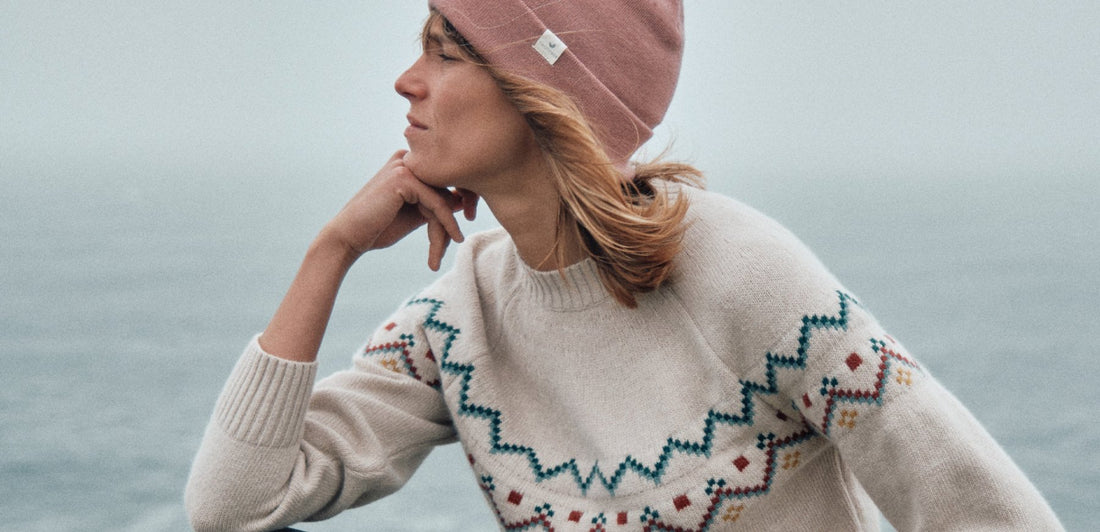Corduroy is usually made from cotton, though it can also be made from polyester, nylon and even spandex to improve its stretch and comfort. However, the classic and most beloved form of corduroy is composed of cotton fibres. Cotton is a natural plant-based fibre that feels soft and breathable, making it perfectly suited for this workwear-meets-stylish-professor fabric. However, don’t let its fluffy exterior fool you! Cotton has a range of sustainability issues, which we’ll get into later. For now, let’s explore the ins and outs of corduroy.
What is Corduroy?
Corduroy is a unique and versatile fabric known for its comfort and durability. It is a textile that has been appreciated for centuries and is still popular today for various types of fashion and even furniture. The name reflects the fabric's special texture, which consists of parallel ridges, or "wales," (aka “cords”) that run lengthwise along the fabric. These wales are created through a special weaving process, which is distinctive to corduroy. It involves extra sets of weft yarns - horizontal threads - that are woven into the fabric at regular intervals and then cut to form the characteristic ridges. The density of these ridges can vary, giving rise to different types of corduroy, such as wide-wale, medium-wale, and fine-wale corduroy, each with its own texture and appearance.
Check out these 3 corduroy pants from our new women’s collection to see what we mean:
Ontong – Raisin

These are women’s corduroy pants with a medium-wale. They’re tailor-made for autumn, being relatively lightweight but with the added warmth that corduroy brings. The Ontong features a stylish high-waist cut and falls just above the ankles.
Matilda – Deep Lake

One of our most popular colours paired with one of our most cherished fabrics. The Matilda are - as its product page states - “the centrepiece of any vintage outfit”. Ever seen what corduroy looks like in a thrift shop? Creased to the point where you wouldn’t want to wear it! Which is what makes getting a pair of straight-cut corduroy pants like the Matilda so much more… sensible.
Elafonisi — Toffee

Finally, the Elafonisi offers something special for the corduroy connoisseur. Ultra-fine cords create a subtle effect that demands closer inspection. Yes, this is corduroy - with all the softness and comfort that implies - but you might not know it at first glance! They also feature two elegant pleats for extra style points.
Is Corduroy Sustainable?

Though corduroy is a popular and durable fabric - seen in everything from accessories, to outerwear, to pants (and who knows: socks?!) - it can come with downsides. Chief among them is the fibre that corduroy tends to be made from. Cotton is a conventional material, which means that it’s been used by the fashion industry for decades with little regard for the environmental damage caused. Widespread cotton production uses up a disproportionate amount of the world’s artificial pesticides - which damage vulnerable ecosystems - and consequently generates large amounts of CO₂, while famously consuming lots of water. The debate is out on the latter point (many of the “facts” surrounding cotton cultivation have been exaggerated), but cotton is undoubtedly a problematic fashion material. Consider that corduroy has also sometimes been made from synthetic fibres like Nylon and polyester.
This is a big no-no for people who care about the environment. Global production of synthetic fibres continues to grow, in spite of their role in climate change, plastic pollution, and fossil fuel use (polyester cannot be made without oil or gas).
For that reason, TWOTHIRDS only uses synthetics when absolutely necessary (to create a little “give” in close-fitting items) and where possible, they should be recycled. When it comes to corduroy, all our styles are made from organic cotton. Though not the most sustainable fabric available to fashion designers, organic cotton does have several environmental plus points. It avoids the use of artificial pesticides and fertilisers - protecting insect species that are vital to food production and biodiversity - tends to involve less water use and natural irrigation systems, and is less reliant on monocultures. Organic cotton farmers take an ethical and biological approach to farming that also has social benefits by not exposing communities, rivers, and workers to harsh chemicals.
All this, and we’ve not even passed the raw material phase! Another characteristic of sustainable corduroy is where and how it has been made. If the manufacturing has taken place in factories with little to no regulation, then the result could be disastrous for the environment. Fortunately, TWOTHIRDS produces in countries with strict regulations on chemical use. Many - though not all - of our factories carry several certification standards that guarantee, for example, the safe treatment of wastewater. By producing in Northern Portugal, we secure high-quality production standards that also allow our styles to outlast fast fashion.
And this is an important point too. Corduroy is known for its durability. So it makes sense that we make our styles from high-quality organic cotton, and draw on the knowledge and resources of experienced seamstresses and seamsters.
Conclusion
Corduroy is a cozy fabric with a unique texture, look, and application. Fast fashion brands tend to use cotton or polyester corduroy, while sustainable fashion brands like TWOTHIRDS prefer to go organic to reduce environmental impact. The most common use for corduroy is smart-looking pants which are a fall favourite. You can shop our newest corduroy collection for women right here, or see how our styles look when whipped up by the wind, here!









